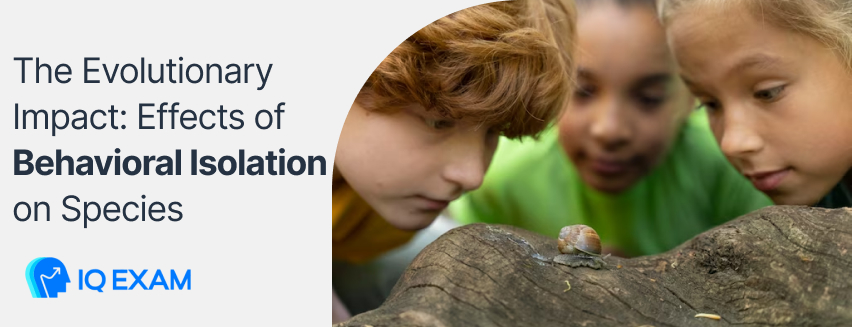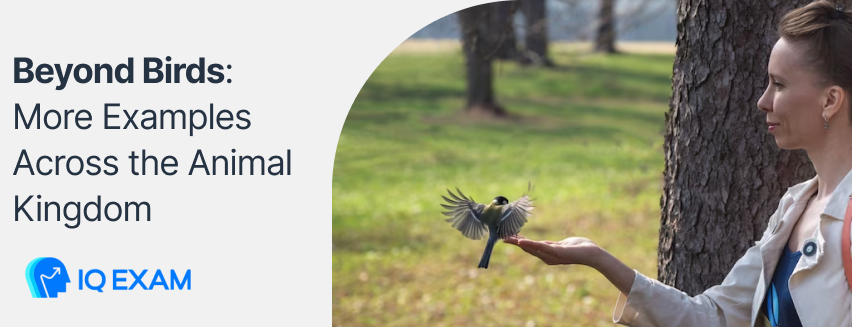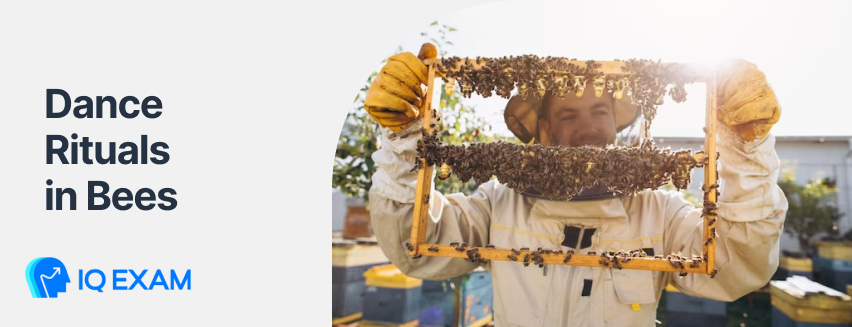
Have you ever wondered why some birds dance to impress a mate while others choose to sing their hearts out
Or why do flowers bloom at different times to seduce very different pollinators?
Well, guess what? That’s nature’s way of practicing “behavioral isolation.” Think of it as nature’s version of a grand reality dating show!
Behavioral isolation is all about the art of exclusive flirting and how species have upped their dating game to the point where they’ve formed entirely new species.
Yes, the dating world in nature is just as convoluted as ours, if not more! Want a backstage pass to the greatest love stories never told?
If so, don’t skip a beat, and let’s dive into the world of biological love and dating together!
The Big Picture: Defining Behavioral Isolation
Imagine behavioral isolation as a matchmaker in the wild, pulling the strings behind the scenes in the grand theater of evolution. Yes, it is possible; and there’s even more to it!
What Exactly is Behavioral Isolation?
So, let’s roll up our sleeves and plunge right into it. You could think of “behavioral isolation” as nature’s way of enforcing a “you can’t sit with us” policy. It’s the phenomenon where certain species only groove to their unique love song.
In simpler terms, it refers to the scenario where different species, or even subgroups within the same species, develop unique mating behaviors or rituals. These behavioral quirks act as filters, ensuring that individuals only mate with those who know the same dance moves or sing the same songs.
Imagine walking into a party where everyone speaks a different language. It would be pretty challenging to find a conversation partner, wouldn’t it? That’s precisely what behavioral isolation does—it creates unique ‘languages’ of love that prevent different species from mixing up.
Ever seen a small bird mate with a bigger bird? Or ever thought about mating a tiger with a dolphin? Absurd, right? Behavioral isolation is precisely the thing that prevents such absurd things from happening.
How Does Behavioral Isolation Occur?
So, how does this mysterious process actually take place in the wild?
Imagine two bird species living in the same forest. One is attracted to a melodious song while the other prefers an elaborate dance. Over time, these birds will only respond to their preferred courtship cues, leading to distinct mating groups. These groups, in turn, evolve separately.
Voila, that’s behavioral isolation in action!
Why Does Behavioral Isolation Happen?
The million-dollar question is, why does this happen? What drives species to develop such distinct courtship rituals or mating behaviors in the first place?
The Role of Different Mating Behaviors
The answer lies in the power of selection, the driving force of evolution. Each species or subgroup evolves mating behaviors that are most effective for them, depending on various factors like environment, predators, or food availability.
Over generations, these behaviors get more and more refined and unique, leading to behavioral isolation.
The Evolutionary Impact: Effects of Behavioral Isolation on Species

So, let’s turn our telescope to the evolutionary landscape and examine the long-term effects of isolated actions on species and ecosystems.
How behavioral isolation promotes Evolution
In social circuses, behavioral isolation acts like a circus manager, carefully deciding which species mate and which do not mate. This mating system ensures that each species maintains its unique evolutionary trajectory, limits genetic mixing, and maintains the unique characteristics of each group
The Effects of Behavioral Isolation on Biodiversity
If nature is a grand theater, then its ingenious casting director is behavioral isolation. By influencing who gets to share their genes with whom, behavioral isolation shapes the roles, each species plays in the grand performance of life on Earth.
The result? A cornucopia of biodiversity, the likes of which exist nowhere else in the universe (as far as we know!).
So, behavioral isolation is a key factor in the evolutionary game, driving diversity and contributing to our planet’s rich tapestry of life. It’s a mechanism that ensures the show goes on, keeping the curtains of life perpetually open.
Genetics and Behavioral Isolation
Behavioral isolation and genetics are like two sides of the same coin, each affecting the other subtly but very obviously.
Isolationist behavior, especially unique mating behaviors, is often genetically coded. This suggests that these behaviors are genetically determined and transmitted from generation to generation.
Did you know that genetics can influence the behavior of an animal?
These behaviors can even be part of the animal cycle! It’s like a game of tag where genetic rules and behavioral tendencies influence each other. It’s pretty cool, isn’t it?
How does behavioral isolation change genetics?
Mating only within their own group helps animals maintain their genetic uniqueness. This is how genetically based behavioral isolation works. Every band seems to have their main currency, and they like to keep it that way and share it with other bands.
It’s like hiding a recipe in the family. To ensure that only family members know the secret ingredients, each family maintains its own unique and distinct culinary traditions.
Over time, as behavioral isolation reinforces these boundaries, genetic differences between groups can become more pronounced. Sometimes these differences can lead to new species, a process called speciation, or an entirely different genetic process!
The interplay of genetic and behavioral isolation is a dynamic and ongoing dance, each shaped and shaped by the other. This beautiful interaction highlights the amazing diversity and richness of life found on our planet.
Beyond Birds: More Examples Across the Animal Kingdom

While our feathery friends provide some fantastic “behavioral isolation” examples, they are certainly not alone. Let’s look closer into the animal kingdom, discovering the unique courtship rituals and mating behaviors that make each species so wonderfully distinct.
Birdsong Variations
Birdsong variations are nature’s own music genres, with each species preferring its unique tune. For example, Darwin’s finches on the Galapagos Islands are known for their distinctive songs, each unique to a particular species.
Even though they might look similar, each species’ song ensures they don’t mate with the others, thus maintaining their distinctiveness.
Firefly Flash Patterns
Each species of firefly has its own specific flash pattern. It’s like a secret Morse code only understood by the same species. This light language is their way of finding a suitable mate, contributing to behavioral isolation.
So, to find the perfect mate, fireflies follow the flash patterns the other one made. Fancy, right?
Dance Rituals in Bees

The buzzing world of bees holds fascinating examples of behavioral isolation. Honeybees perform an intriguing ‘waggle dance’ to communicate the location of food sources. This dance language, though, varies between species.
A slight difference in the angle or duration of the dance could mean an entirely different message, thus causing behavioral isolation.
Courtship Dances in Birds
We return to the bird world, but this time, for their dances. Species like the Blue-footed Booby have unique dance rituals involving sky-pointing, foot-lifting, and wing-spreading that attract mates.
These elaborate dances ensure they only attract and mate with the suitable species, leading to behavioral isolation.
Frog Croaking Tones
To frogs, the key to a potential mate’s heart is through a unique serenade. Different species of frogs have different croaking sounds.
Females are finely tuned to the specific croak of their species and will only respond to that, contributing to behavioral isolation.
Insect Pheromones
For insects, love is literally in the air! Different insect species use different pheromones (chemical signals) to attract mates. It’s like each species has its distinct perfume.
And just like you wouldn’t wear a perfume you didn’t like, insects are attracted only to the specific pheromones of their species.
Mating Calls of Crickets
The nighttime chorus of crickets is more than just background noise; it’s a symphony of love! Each cricket species has a unique mating call that only females of the same species can recognize. The specific chirp of a male cricket acts as a password for love, ensuring only the right female responds.
So, the female cricket only responds to the chirping of male crickets, and they don’t have any mating sounds or moves.
Migration Routes in Fish
Fish, too, engage in behavioral isolation, albeit more mobile. Some species follow specific migration routes for breeding. Those who don’t know the course miss the mating season, contributing to the separate evolution of species.
So, if you ever watch a fish moving in water, know that it might be calling for love!
Mating Rituals in Peacocks
The magnificent peacock offers one of the most flamboyant examples of behavioral isolation. The male fans out his dazzling feathers and shakes them in a specific pattern to attract the female. If the dance isn’t impressive enough, the peahen walks away, thus maintaining the purity of the species.
So, in peacocks, the male should dance, and the female is the one that accepts it! The more beautiful the dance is, the more likely the male peacock is to find love!
Territory Marking in Mammals
Many mammals, like wolves or tigers, mark their territories using specific scents. Only individuals of the same species recognize and respect these boundaries.
This territorial behavior keeps different species separate and promotes mating within the same species. The smell used to mark their boundaries also differs from species to species.
For example, although tigers and leopards are from the same genetic family and both mark their territory to find a match, their smell differs. So, the leopard only mates with a leopard and never with a tiger!
Feeding Behaviors in Insects
Lastly, even the way an insect feeds can lead to behavioral isolation. Some species have evolved complex behaviors around food collection and storage. These behaviors can become so species-specific that they act as a barrier to mating with others who don’t share the same habits.
Nesting Preferences in Birds
Returning to birds, the way to a partner’s heart is often through nest-building. Different bird species have unique nesting styles and preferences. It’s a case of “if you build it right, they will come.”
If a potential mate doesn’t appreciate the nest’s architectural style, well, no nest-warming party for them! See how different are the ways of birds for mating?
Hunting Techniques in Predators
Hunting techniques play a critical role in behavioral isolation in the realm of predators. Species like the cheetah and lion live in the African Savannah but have markedly different hunting styles. These unique behaviors separate the two species and enhance mating within each group.
Mating Dances in Lizards

When lizards get down to the business of love, dance is their language. Each species has a unique set of moves designed to woo. If a lizard doesn’t know the proper steps, it’s a no-go for romance.
Vocalizations in Marine Mammals
Under the sea, marine mammals like dolphins and whales use unique sounds for communication and mate attraction. Each species sings its own melodic tune. Each group has its favorite song and will only slow dance with those who know the lyrics.
Foraging Strategies in Ants
Even the humble ant has its own rules for romance, determined by its foraging strategy. Some ants forage alone, while others work in groups.
These lifestyle differences can lead to behavioral isolation as the loners and the team players stick to their own kind.
Mating Pheromones in Moths
Moths communicate their readiness for romance through pheromones. Each species releases a specific chemical cocktail that says, “Hey, I’m single!”
But only those of the same species will pick up on the signal and flutter over.
Parental Care in Fish
Some fish species, like the mouthbrooding cichlids, have unique ways of caring for their young. These parenting behaviors can serve as mating signals. If a potential mate follows a different child-rearing style, it’s a no-go for romance.
Breeding Displays in Frogs

The froggy world of love is a visual spectacle. Different frog species have distinctive breeding displays, from vibrant color changes to acrobatic movements. It’s like each species has its own secret handshake, understood only by its kind. If a frog can’t perform the correct display, it’s left out of the love game.
Social Hierarchy in Primates
Now, let’s turn to our closest relatives in the animal kingdom: primates. Social hierarchy plays a significant role in their mating system.
Those at the top, with dominant behaviors and status signals, get the most opportunities to mate. These hierarchies are species-specific, leading to behavioral isolation.
Frequently Asked Questions
What is a behavioral Isolation?
Behavioral isolation is a major evolutionary mechanism whereby two homogeneous species develop distinctive behaviors, especially mating rituals, that prevent reproduction This isolation helps to purify and force each species to encourage individual evolutionary trajectories.
Why is behavioral isolation important?
Isolated behavior plays an important role in ecology. Encouraging mating within the same species ensures that each species retains its unique characteristics, contributing to the diversity of life on Earth.
Could behavioral isolation lead to the creation of new species?
Yeah! When a group of species develops unique behaviors that others do not, it can eventually lead to new species, a process called speciation
Over time, these behavioral differences can become so entrenched that the two groups cannot breed with each other, creating two distinct species
Do plants have isolated behavior?
Although behavioral isolation is mostly studied in animals because of their behavioral complexity, the same concept certainly exists in plants. This is associated with pollinator preference, where certain plant species are pollinated only by specific pollinators.
What is an example of behavioral dissociation?
A good example of isolationist behavior can be found in fireflies. Each firefly has a unique flame that acts like a mating symbol. Different types of fireflies will not recognize the burn and respond to it, thus preventing interbreeding.
Is behavioral Isolation a prezygotic or postzygotic barrier?
Behavioral isolation is a precoupling inhibitor, preventing fertilized potatoes. It works before reproduction and prevents diverse individuals from mating in the first place.
What is the difference between behavioral isolation and geographic isolation?
Behavioral isolation is based on behavioral differences, especially mating behavior, which prevent species from breeding. But geographic isolation occurs when physical barriers, such as mountains or water bodies, separate the same species, preventing them from breeding
How does behavioral isolation contribute to development?
Behavioral isolation contributes to evolution by ensuring that each species continues its unique evolutionary journey. It maintains the uniqueness of each group by suppressing different species. This isolation diversifies, creating many unique species, each suited to its own place in the ecosystem.
Final Words
And there we are, friends!
We now know that “love is love” not only between humans but also between animals and animals! By “love” here, we mean the attitude that makes you think that a certain person is your perfect partner!
Birds have unique ways of communicating and interacting with each other, contributing to the incredible diversity of life on our planet.
Whales, for example, have exotic dancing courtships and marine mammals have mysterious songs. This wonder creates a vibrant symphony of biodiversity.
With this review, we hope you have gained a deeper appreciation for the complex beauty of our natural world. Behavioral isolationism is far more than just a biological concept; It is a testament to how nature subtly celebrates the uniqueness of every creature in our vast ecosystem.
So, if a cricket band ever plays your music on a warm summer night or you watch a spectacular kite show, remember: you are witnessing a timeless dance of isolation, a wonderful source of life on our beloved planet.
Keep exploring, learning, and remembering: life is a dance, so let’s dive into nature’s love songs!
